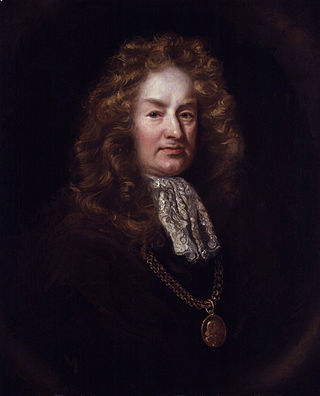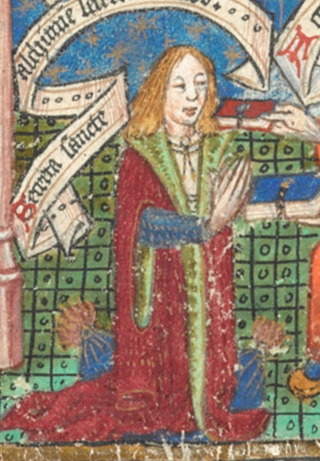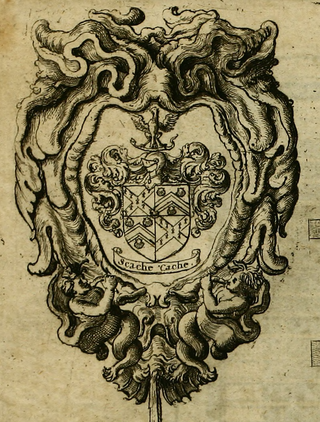This article contains information about the literary events and publications of 1652.
The 1711 Sales Auction Catalogue of the Library of Sir Thomas Browne highlights the erudition of the physician, philosopher and encyclopedist, Sir Thomas Browne (1605-1682). It also illustrates the proliferation, distribution and availability of books printed throughout 17th century Europe which were purchased by the intelligentsia, aristocracy, priest, physician and educated merchant-class.

Elias Ashmole 23 May 1617 – 18 May 1692) was an English antiquary, politician, officer of arms, astrologer and student of alchemy. Ashmole supported the royalist side during the English Civil War, and at the restoration of Charles II he was rewarded with several lucrative offices.

Fasciculus Chemicus or Chymical Collections. Expressing the Ingress, Progress, and Egress, of the Secret Hermetick Science out of the choicest and most famous authors is an anthology of alchemical writings compiled by Arthur Dee (1579–1651) in 1629 while resident in Moscow as chief physician to Czar Michael I of Russia.
The year 1652 in science and technology involved some significant events.

"The Canon's Yeoman's Tale" is one of The Canterbury Tales by Geoffrey Chaucer.

Projection was the ultimate goal of Western alchemy. Once the philosopher's stone or powder of projection had been created, the process of projection would be used to transmute a lesser substance into a higher form; often lead into gold.

John Worlidge or John Woolridge (1640–1700) was a noted English agriculturalist, who lived in Petersfield, Hampshire, England. He was considered a great expert on rural affairs, and one of the first British agriculturalists to discuss the importance of farming as an industry.

Thomas Norton was an English poet and alchemist best known for his 1477 alchemical poem, The Ordinal of Alchemy.
John Dastin (c.1293-c.1386) was an English alchemist of the fourteenth century. Little is known of his life beyond the texts which are attributed to him. Dastin is known for correspondence with Pope John XXII and Cardinal Napoleone Orsini in defense of alchemical practice, dated to 1320.

Monas Hieroglyphica is a book by John Dee, the Elizabethan magus and court astrologer of Elizabeth I of England, published in Antwerp in 1564. It is an exposition of the meaning of an esoteric symbol that he invented.

Thomas Charnock (1524/1526–1581) was an English alchemist and who devoted his life to the quest for the Philosopher's Stone. His unpublished notebooks are useful, not just for an understanding of Elizabethan attitudes towards alchemy in general, but for the insight they give to Charnock's life and thoughts.

William Backhouse was an English philosopher, alchemist, astrologer, translator, and the esoteric mentor of Elias Ashmole.

Theatrum Chemicum is a compendium of early alchemical writings published in six volumes over the course of six decades. The first three volumes were published in 1602, while the final sixth volume was published in its entirety in 1661. Theatrum Chemicum remains the most comprehensive collective work on the subject of alchemy ever published in the Western world.

Thomas Wharton (1614–1673) was an English physician and anatomist best known for his descriptions of the submandibular duct and Wharton's jelly of the umbilical cord.
The Angelicall Stone is a concept in alchemy. According to Elias Ashmole the stone was the goal above all goals for the alchemist. In his prologue to the Theatrum Chemicum Britannicum, he states:
Lastly, as touching the Angellicall stone, it is so subtill, saith the aforesaid author, that it can be neither seene, felt, or weighed, but tasted only. The voyce of man comes short in comparison; nay the air itself is not so penetrable, and yet a stone, that will lodge in the fire to eternity without being prejudiced. It hath a divine power, celestiall, invisible, above the rest; and endows the possessor with Divine gifts. It affords the apparition of angells, and gives a power of conversing with them, by dreams and revelations:nor dare any evil spirit approach the place where it lodgeth. Because it is a quintessence wherein there is no corruptable thing; and where the elements are not corrupted, no devil can stay or abide.
S. Dunston calls it the Food of Angels, and by others it is termed The Heavenly Viaticum; the Tree of Life, and the true Alchochodon, or Giver of Years; for by it man's body is preserved from corruption, being thereby enabled to live a long time without foode: nay 'tis made a question as to whether any man can dye who uses it. Which I doe not so much admire, as to think why the possessors of it should desire to live, that have those manifestations of glory and eternity, presented unto there fleshly eyes; but rather desire to be dissolved, and to enjoy the full fruition, then live where they must be content with the bare speculation.
After Hermes had once obtained knowledge of this stone, he gave over the use of all other stones; and therein only delighted; Moses and Solomon were the only three that excelled in the knowledge thereof, and who therewith wrought wonders.

Thomas Henshaw (1618–1700) was an English lawyer, courtier, diplomat and scientific writer. While not a published alchemist, he was a significant figure in English alchemical work from the 1650s onwards; he is known to have used the pen-name "Halophilus".

The Mirror of Alchimy is a short alchemical manual, known in Latin as Speculum Alchemiae. Translated in 1597, it was only the second alchemical text printed in the English language. Long ascribed to Roger Bacon (1214-1294), the work is more likely the product of an anonymous author who wrote between the thirteenth and the fifteenth centuries.
Samuel Norton (1548–1621) was an English country gentleman and alchemist.














